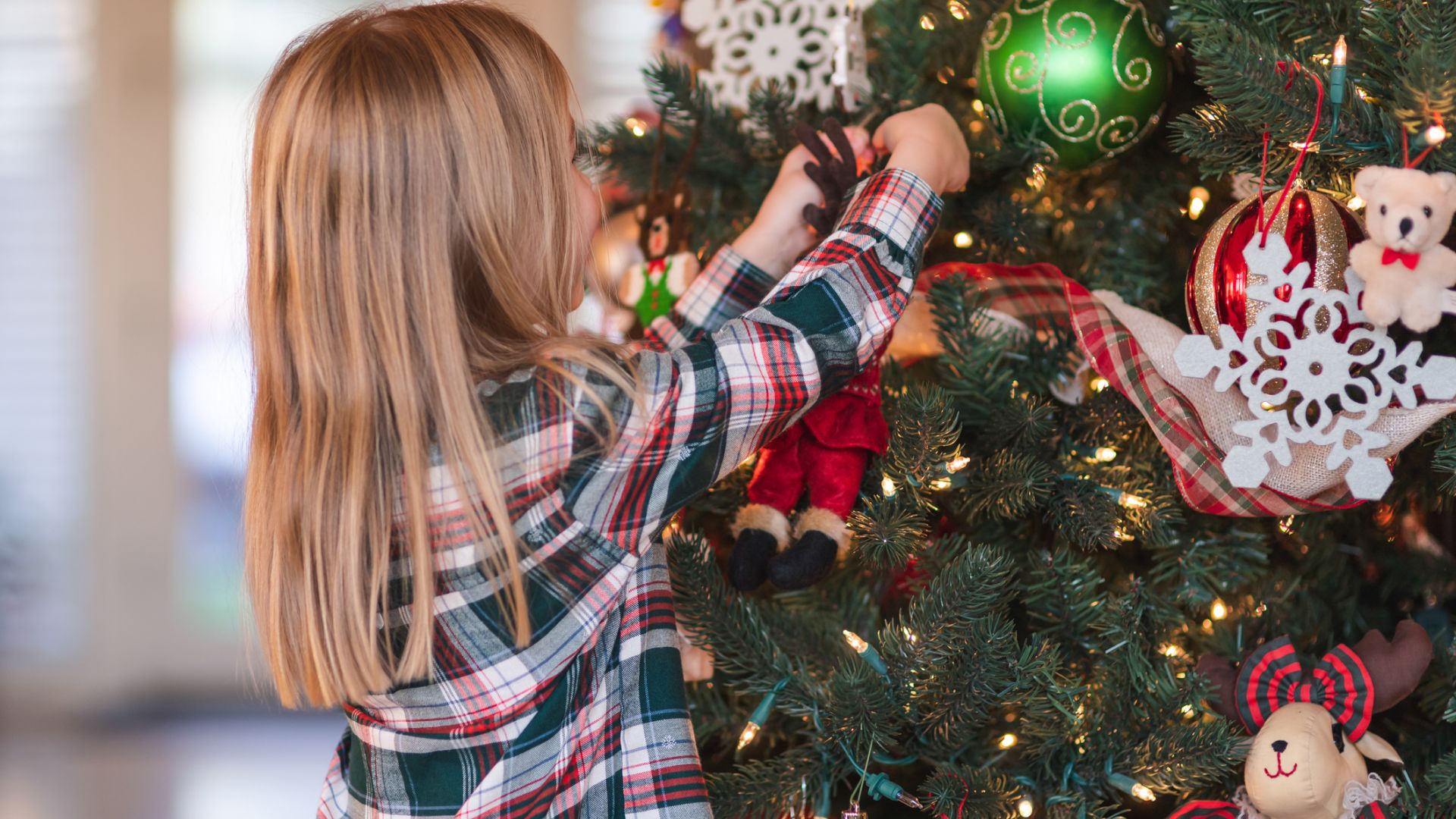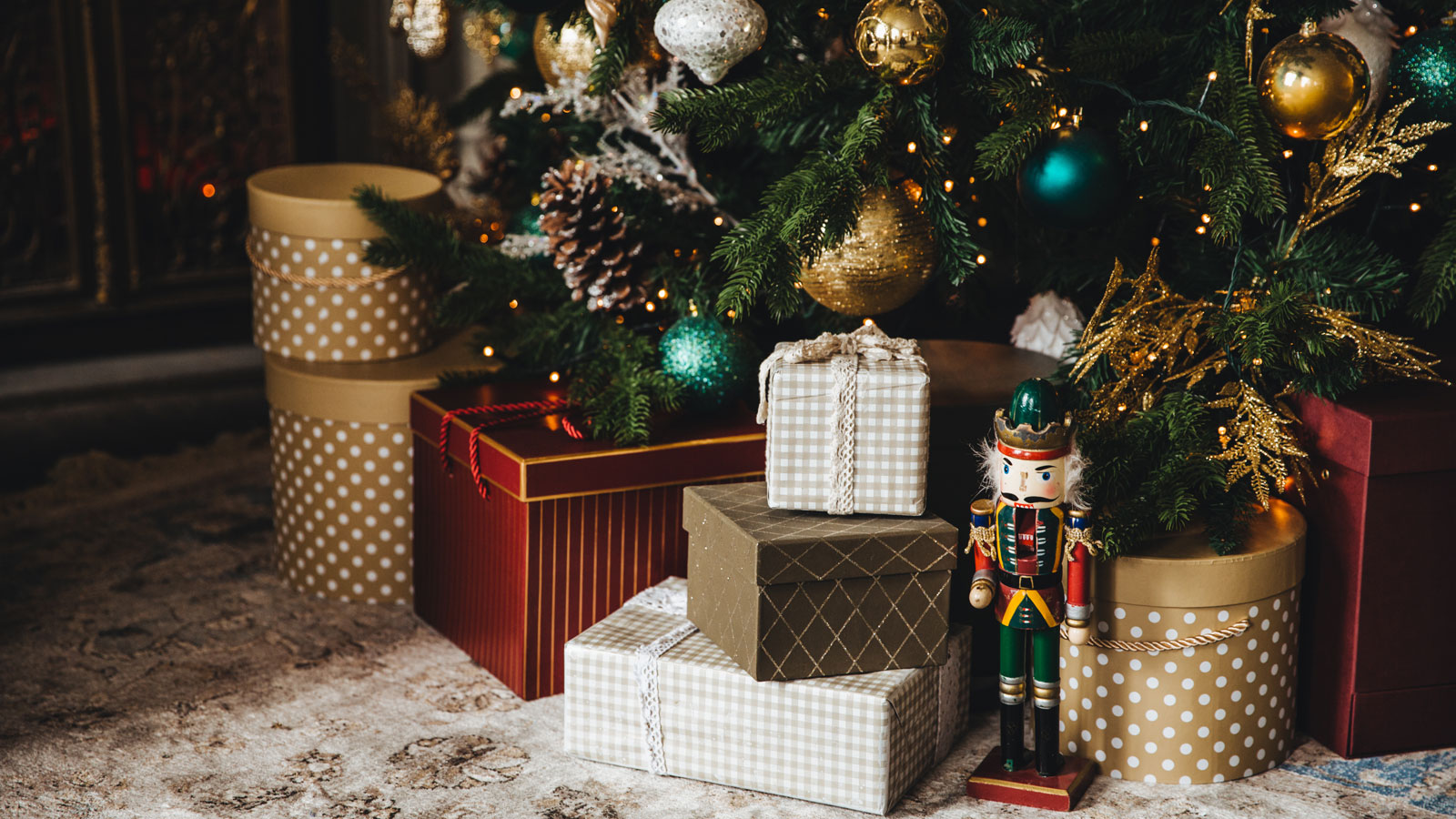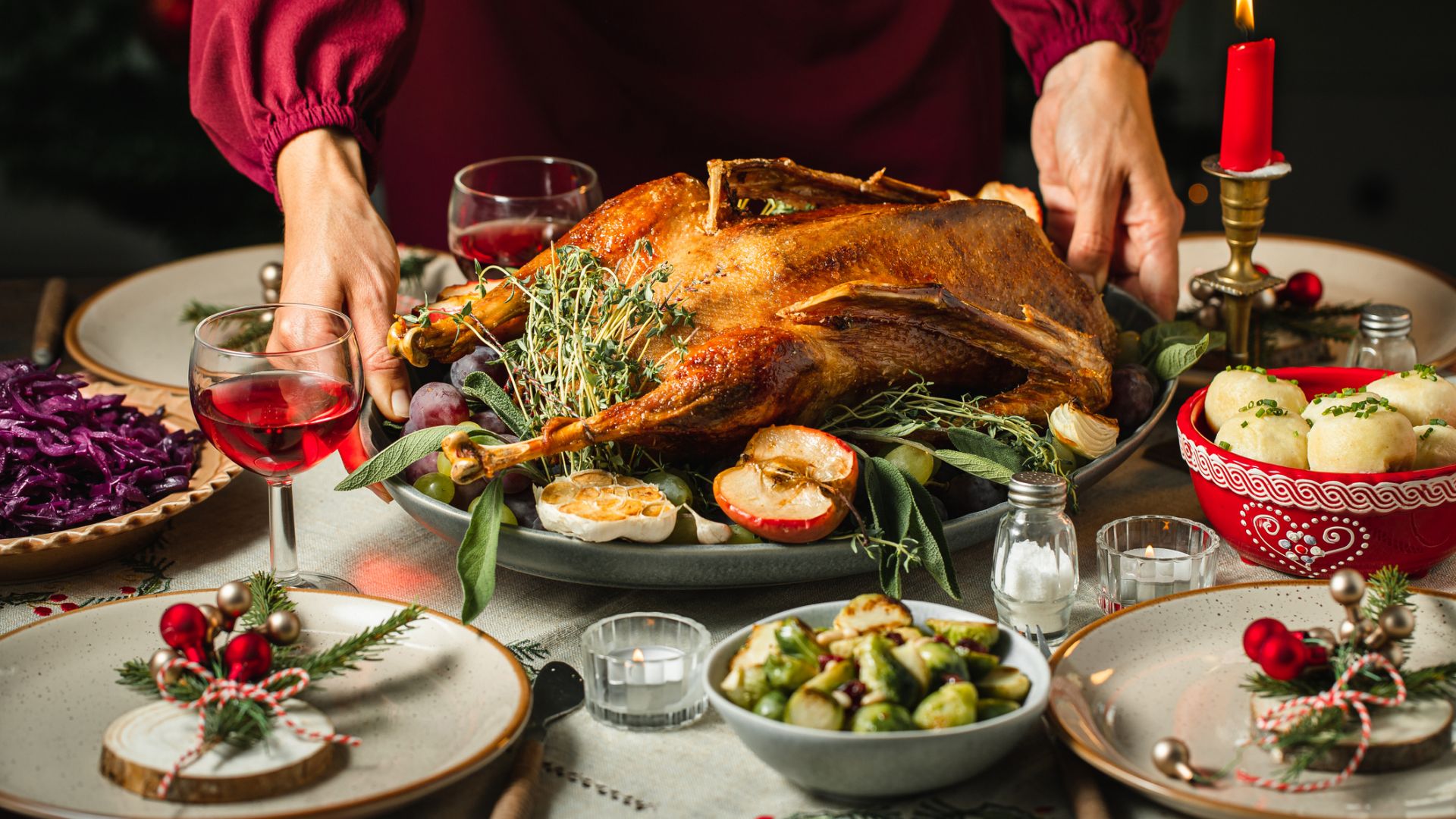Ciudades y Cultura
Nochebuena: Árbol de Navidad, Niño Jesús y Papá Noel
La Navidad es un sentimiento. La Navidad es recuerdo y expectación a partes iguales: En Alemania, este sentimiento se celebra durante más de cuatro semanas: el Adviento. Para mucha gente, sin embargo, Nochebuena es el día más bonito del año. Tradicionalmente, ese día se monta y decora el árbol de Navidad, bajo el cual se depositan los regalos por la tarde o por la noche.
La Nochebuena en Alemania es uno de los momentos culminantes del calendario anual para muchas personas, y calienta los corazones con una mezcla única de tradición y magia festiva. Este día tan especial se celebra no sólo como una festividad religiosa, sino también como una ocasión para celebrar el amor, la comunidad y los valores que hacen de la Navidad algo tan único. Desde los resplandecientes adornos del árbol de Navidad hasta la deliciosa cena navideña, la Nochebuena llena el país de una irresistible atmósfera de calidez y unión.
El árbol de Navidad es el árbol más hermoso.
 Girl hangs ornaments on the Christmas tree
©gettyimages (FatCamera)
Girl hangs ornaments on the Christmas tree
©gettyimages (FatCamera)
Varios villancicos alemanes cantan al árbol de Navidad, de hecho, una conífera adornada con velas es el símbolo de los días navideños. La costumbre de colocar árboles de Navidad al aire libre en plazas importantes, en iglesias y en otros edificios se extendió desde el ámbito de habla alemana a todo el mundo a lo largo del siglo XIX. El árbol de navidad también forma parte de las celebraciones navideñas de la mayoría de las familias alemanas. A menudo toda la familia va a comprar estos árboles a puestos especiales de los mercadillos o incluso la gente los tala con sus propias manos en parcelas de bosque destinadas a tal efecto. En algunas familias es tradición que decore el salón durante todo el período de Adviento mientras que otras lo ponen en Nochebuena. Normalmente todos, grandes y pequeños, participan en la decoración del árbol que tiene un aspecto diferente en cada hogar: de reluciente color blanco, en verde y rojo, los colores tradicionales, con bolas de Navidad, figuritas de madera o cintas doradas y plateadas, con velas auténticas o eléctricas… A menudo esta decoración se hereda de generación en generación convirtiendo cada árbol de Navidad en una pieza única.
Nochebuena: ¿Niño Jesús o Santa Claus?
 Decorated Christmas tree and many presents underneath. Christmas tree with lots of colorful decorations
©AdobeStock (VK Studio)
Decorated Christmas tree and many presents underneath. Christmas tree with lots of colorful decorations
©AdobeStock (VK Studio)
A diferencia de otros muchos países, en Alemania los regalos se reparten el 24 de diciembre. En algunas regiones de Alemania los regalos los trae el niño Jesús y en otras Papá Noel. Es cierto que Papá Noel, con su poblada barba blanca, es una invención reciente, pero ha logrado imponerse, sobre todo en el norte del país. Por el contrario, el niño Jesús con sus rizos dorados tiene más protagonismo en el sur. El 24 de diciembre muchas familias siguen la tradición de ir a la misa del gallo antes o después de abrir los regalos, aunque no vayan a la iglesia el resto de los días del año. En esas misas suele haber un ambiente muy especial. Las campanas tocan y toda la familia se pone en camino para encontrarse allí con otras familias, vecinos y amigos. En muchas iglesias se pueden admirar belenes que representan el nacimiento de Cristo con figuritas primorosamente talladas. También es bastante habitual que se represente la historia de la Navidad durante la misa en forma de portal de Belén viviente.
Delicias festivas: cena navideña desde el ganso hasta la ensalada de patatas
 Woman sets table for Christmas dinner with roast goose
©gettyimages (alvarez)
Woman sets table for Christmas dinner with roast goose
©gettyimages (alvarez)
La cena de Nochebuena es una de las comidas más tradicionales y copiosas del año. En Nochebuena, muchas familias ponen en el plato ensalada de patatas con salchichas. Esta tradición es especialmente popular en Turingia y Sajonia. Los siguientes días de Navidad, se sirve ganso asado con albóndigas y lombarda o carpa. En Schleswig-Holstein, la gente prefiere el pato. Independientemente del plato elegido, la cena de Navidad es siempre un momento de compañerismo y alegría. Es un momento de encuentro. Por lo tanto, la cena de Navidad no es sólo una experiencia culinaria, sino una expresión de amor y conexión que refleja la naturaleza festiva de esta época del año.
Más información en la página de la campaña.
Winter and Christmas
Close your eyes and let yourself be acoustically enchanted by the diverse impressions on your journey through Germany!
Intro with music:
“Experience Germany – A Surprising Journey of Discovery”
INTRO
In the run-up to Christmas, the smell of roasted almonds, gingerbread and mulled wine is found everywhere in Germany. Each city has its own Christmas market. One of the most famous is the Nuremberg Christkindlesmarkt and it is opened by the Christ Child himself, says City Councilor Dr. Michael Fraas.
OST Dr. Michael Fraas, Nuremberg, Bavaria
Man: It is the Friday of the first Advent weekend, it is dark at the main market. All the lights will be turned off, including those in surrounding buildings and stalls. The square is dark. Then a big spotlight comes on, directed at the balcony of the Frauenkirche, and suddenly the Christ Child is standing there in his golden robe and crown and says: “The Christ Child invites you to his market and everyone is welcome.”
And the oldest German Christmas market is actually the Striezelmarkt in Dresden, dating back to 1434. Like Nuremberg with its gingerbread, Dresden’s Christmas market is also associated with a famous pastry, reports Veronika Hiebl of Tourismus Marketing Gesellschaft Sachsen.
OST Veronika Hiebl, Dresden, Saxony
Woman: The Dresden Striezelmarkt and the Dresden Christstollen share a common history, and this history continues to this day, as the Dresden Striezelmarkt owes its name to the traditional pastry originally known as Striezel.
But when it comes to the capital city of Christmas markets, Christian Tänzler of Visit Berlin clearly sees this as the German capital, with more than 50 themed markets ranging from royal to urban.
OST Christian Tänzler, Visit Berlin
Man: We have a Christmas market for dog lovers, for example. Of course, we also have nice things like a children’s Christmas market, a winter camp for the LGBTQI community, we have an old railroad, which is a bit magical and atmospheric in an old locomotive shed. And, what is very, very important in Berlin is the issue of sustainability. We have an organic market at Kollwitz Square. Therefore, everyone can find what they are looking for.
The 17 Christmas markets in “Holy Hamburg” also range from the cheeky and frivolous “Santa Pauli” on the Reeperbahn to maritime Christmas flair, explains Guido Neumann from Hamburg Tourismus.
OST Guido Neumann, Hamburg Tourismus
Man: We have a Christmas market in the Hafencity right on the waterfront, overlooking the harbor, a Christmas market around the Binnenalster lake or there are two Christmas markets on the waterways, on the canals. In addition, there are many things that take place on ships: Christmas fairy tales on steamboats on the Alster river, boat trips and Christmas-themed cruises on the Elbe through the brightly lit harbor.
Grog instead of mulled wine, fish sandwiches instead of the usual bratwurst. But stollen, cookies, Santa Claus, Christmas carols and Advent calendars are also part of the Advent season. According to the Guinness Book of Records, the largest Advent calendar house in the world is located in the Black Forest, according to Oliver Gerhard, spokesman for the town of Gengenbach.
OST Oliver Gelhardt, Gengenbach Advent calendar, Baden-Württemberg
Man: The town hall happens to have 24 windows, and this town hall is illuminated and becomes a giant Advent calendar, and every evening at 6 pm a window opens. The special thing about the Gengenbach Advent calendar is that great artists are always included. We already had paintings by Chagall, by Tomi Ungerer … There is always great art in these windows.
If you want to see the German cities with the most beautiful Christmas decorations through a window, you can book river cruises to romantic winter destinations on the Rhine, Danube or Elbe. From November to March, so-called winter punting trips are also offered on the Spreewald, says Patrick Kastner from Reiseland Brandenburg.
OST Patrick Kastner, Spreewald, Brandenburg
Man: These are unique Winter moments to enjoy snuggled up in a warm wool blanket with mulled wine in hand. You can listen dreamily to stories of the bargemen, who stand at the end and steer the ship almost like a gondola in Venice.
If you travel to Germany’s northernmost tip, you can find fir trees in Freest and on the island of Rügen, which are decorated with apples, potatoes and rose hips instead of baubles, angels and tinsel, because that’s where Lütten Christmas is celebrated, the Christmas festival of animals based on a book by Hans Fallada, explains Kathrin Hackbarth from Tourismusverband Mecklenburg-Vorpommern.
OST Kathrin Hackbarth, Mecklenburg-West Pomerania: Lütten Christmas
Woman: The animals also find it difficult to find the appropriate food: there is snow on the Baltic coast in some places. So the idea came up to create edible ornaments. These can be titmouse rings, carrots, clay pots filled with lard and seeds or fruit, which are then laid out for the animals.
A small joy for the forest animals in the snow. And the snow also makes skiers happy, especially in the Bavarian Alps and the Black Forest. But there are also lifts on the Wasserkuppe mountain in Hesse, on the Fichtelberg in Saxony and on the Erbeskopf in the Palatinate. And Andreas Lehmberg from the Harzer Tourismusverband recommends winter vacations in Lower Saxony and Saxony-Anhalt.
OST Andreas Lehmberg, Harz ski resorts
Man: There are large ski resorts for alpine skiing in Braunlage on the Wurmberg or the Matthias-Schmidt-Berg in Sankt Andreasberg, and in the ski resort on the Bocksberg mountain in Hahnenklee. Those are the big ones. In addition to alpine skiing, cross-country skiing in the Harz Mountains is of course very exciting, where we have over 500 km of cross-country trails. And also, the Harz Mountains are very important when it comes to tobogganing, because from the north we are the first mountain range where you can go tobogganing on a longer stretch. That is why we have a dense network of winter hiking trails prepared.
If you want to get really active this winter, you’ll find plenty of sporting highlights at the Olympic base in Oberhof in the Thuringian Forest, reveals Thuringian sports journalist Katja Bauroth.
OST Katja Bauroth, Oberhof, Thuringia
Woman: There is the ski jump. Walking up and down the steps is great for the leg muscles. You will meet international athletes in the biathlon stadium on the Grenzadler. It is also possible for tourists there to have a go at the targets themselves. The cross-country ski hall allows year-round cross-country skiing and you can also meet the international crème de la crème of Nordic skiing there.
Well then, have fun in Germany in the wintertime!
OUTRO